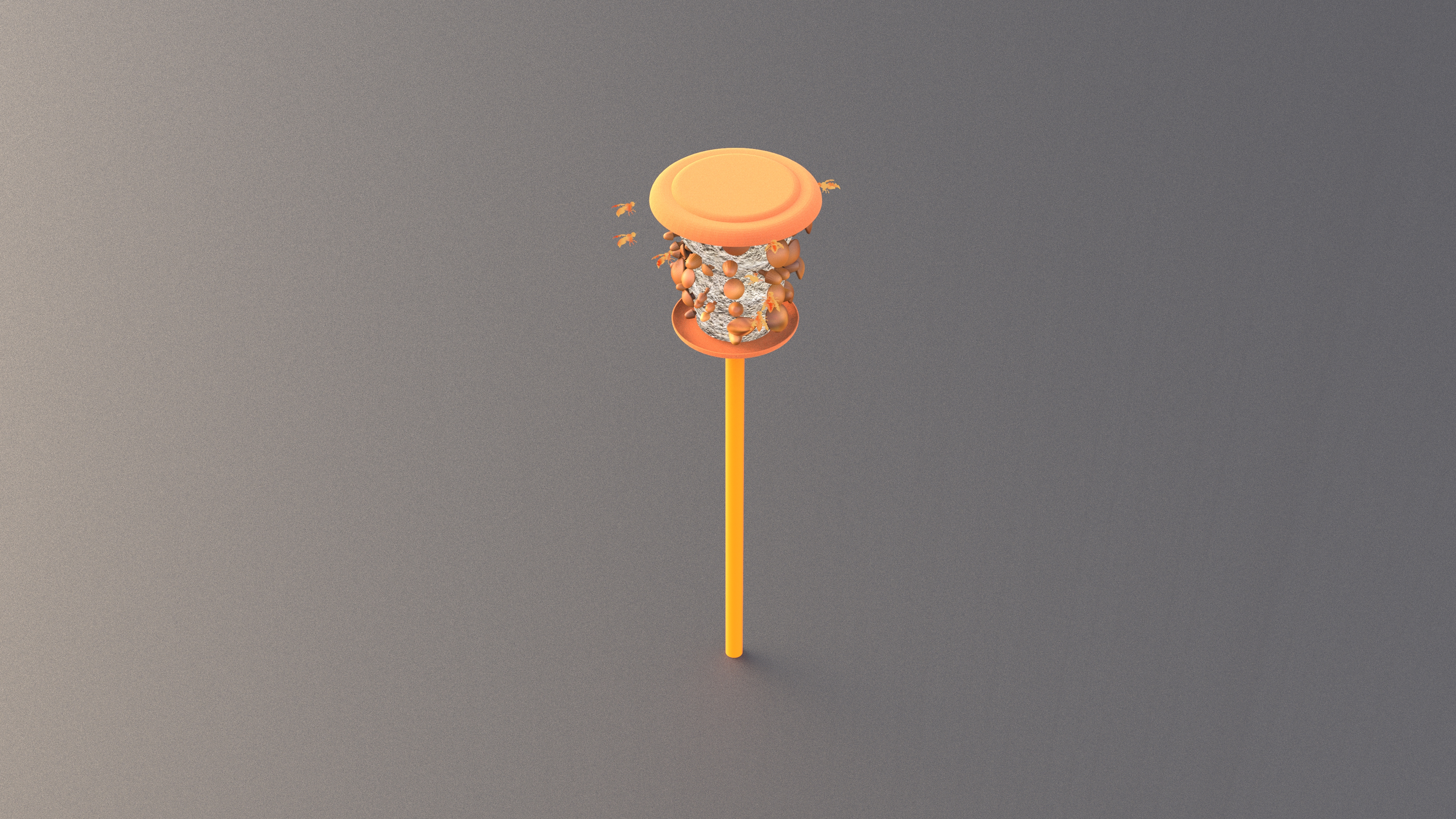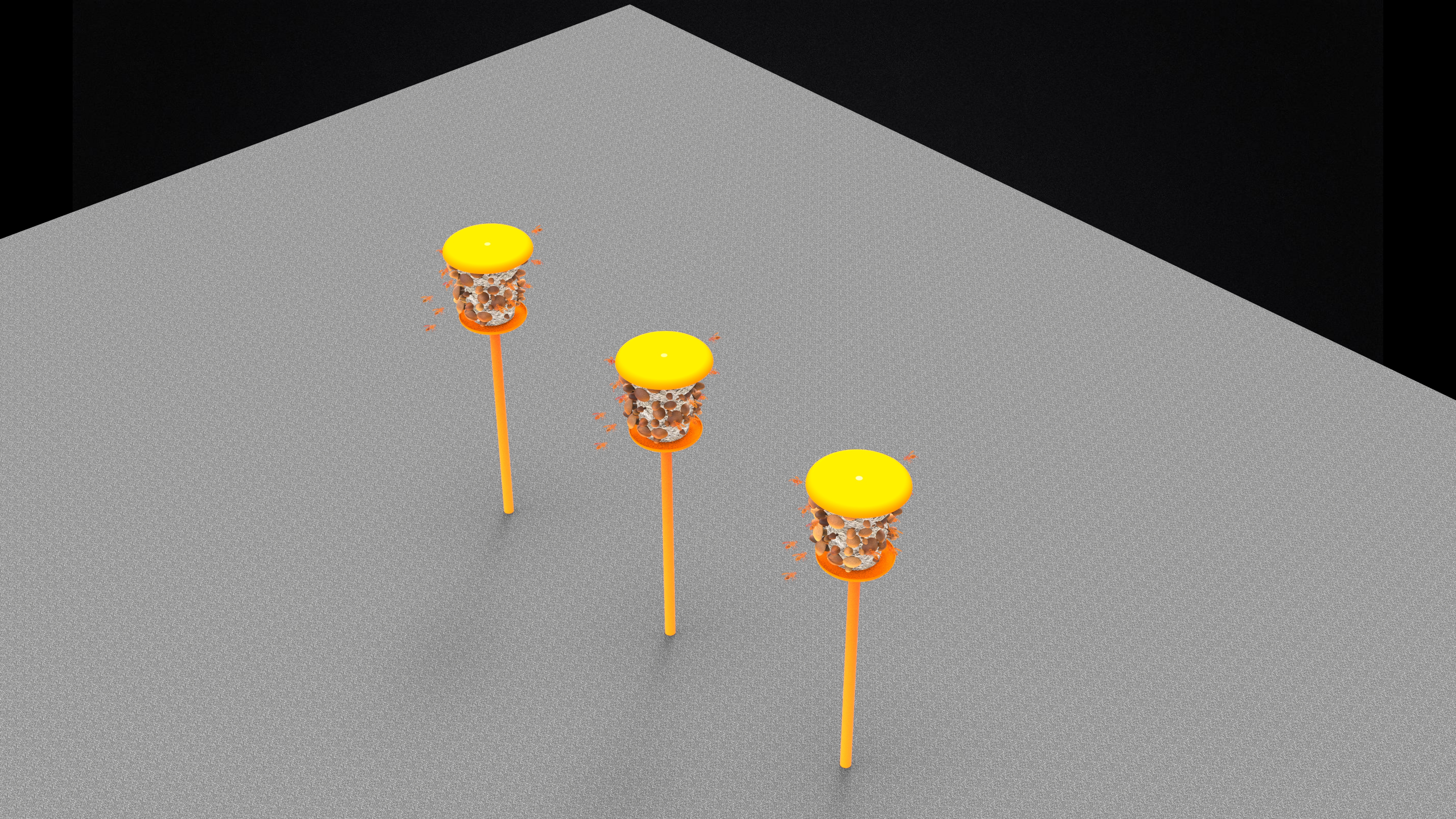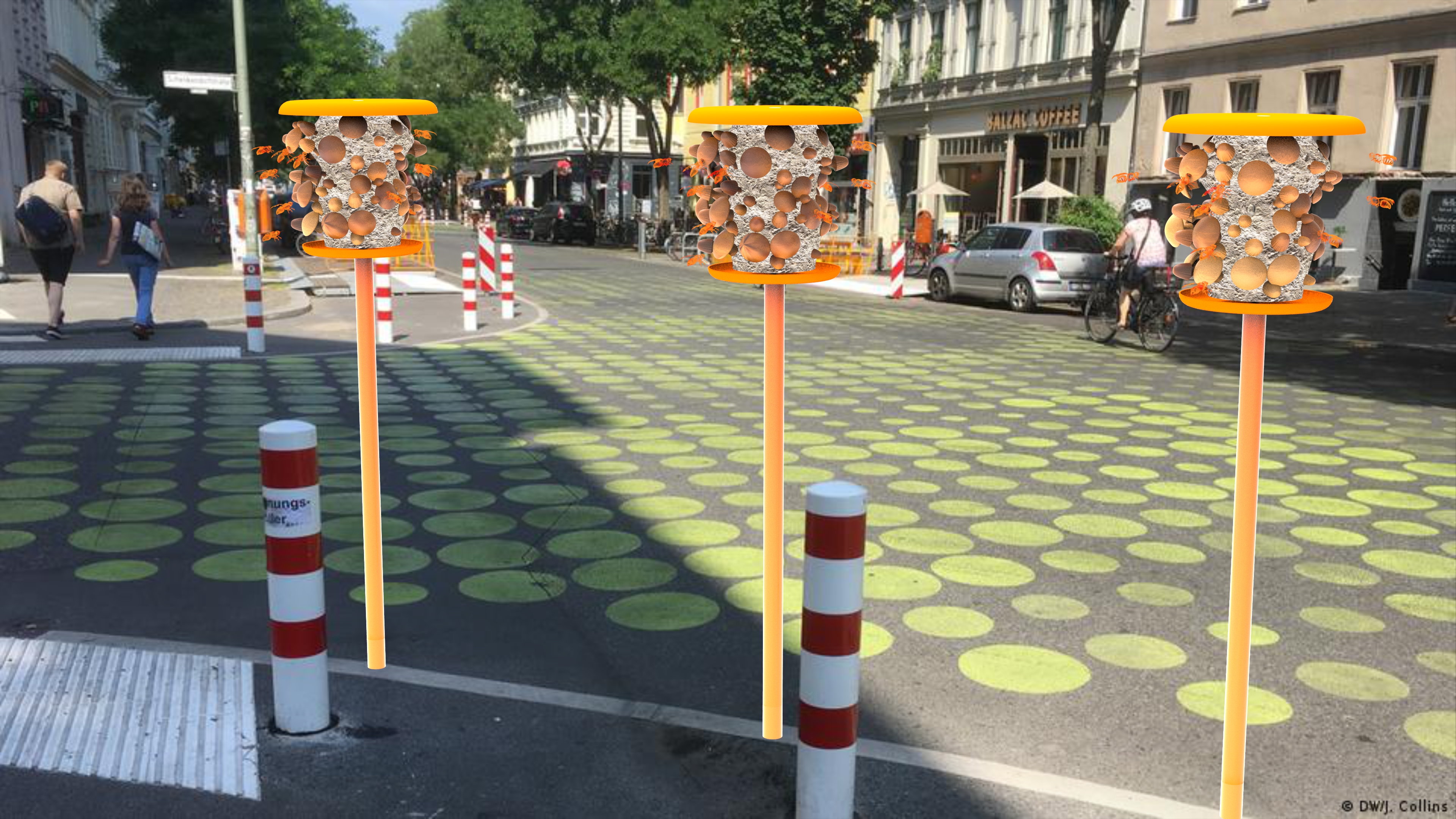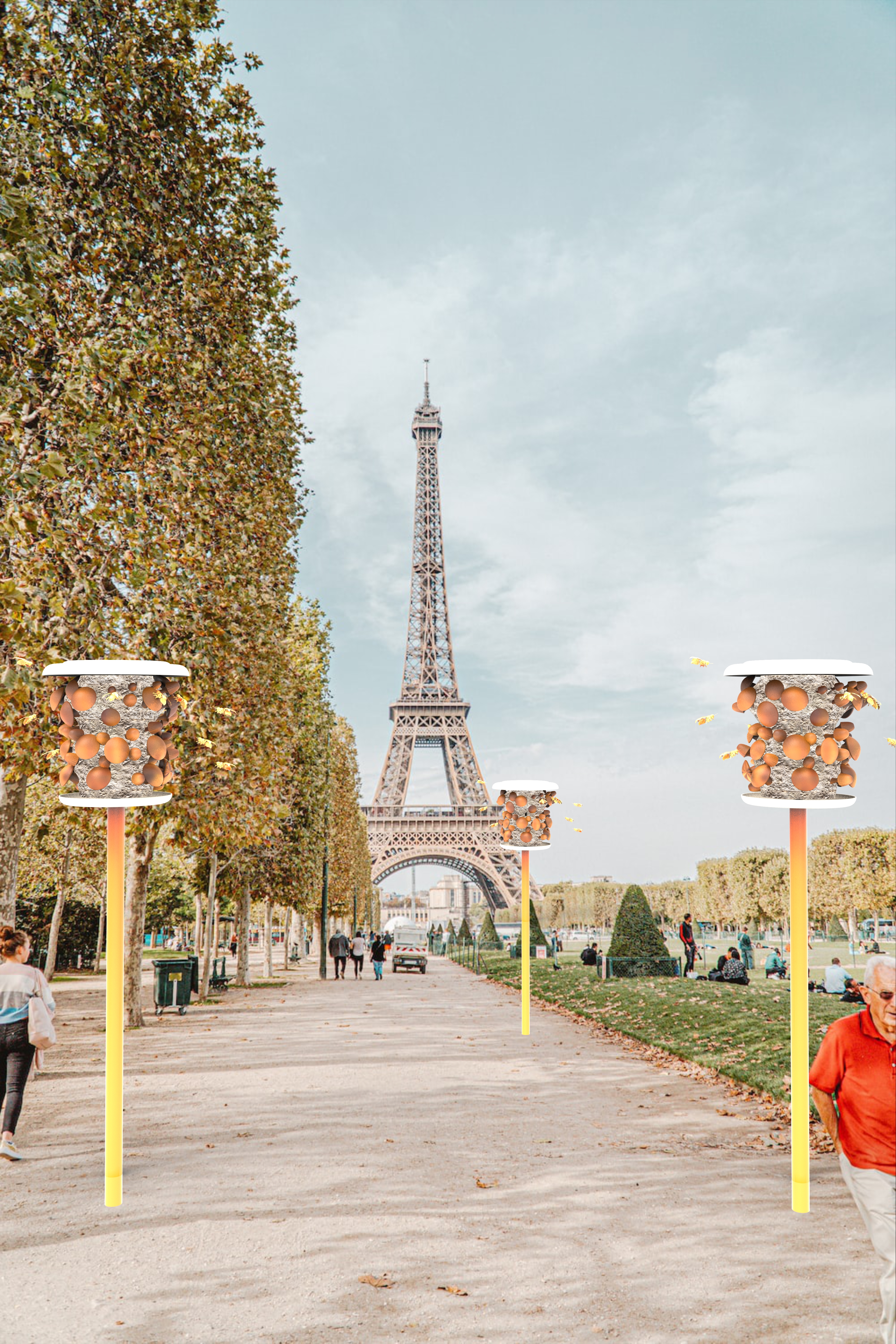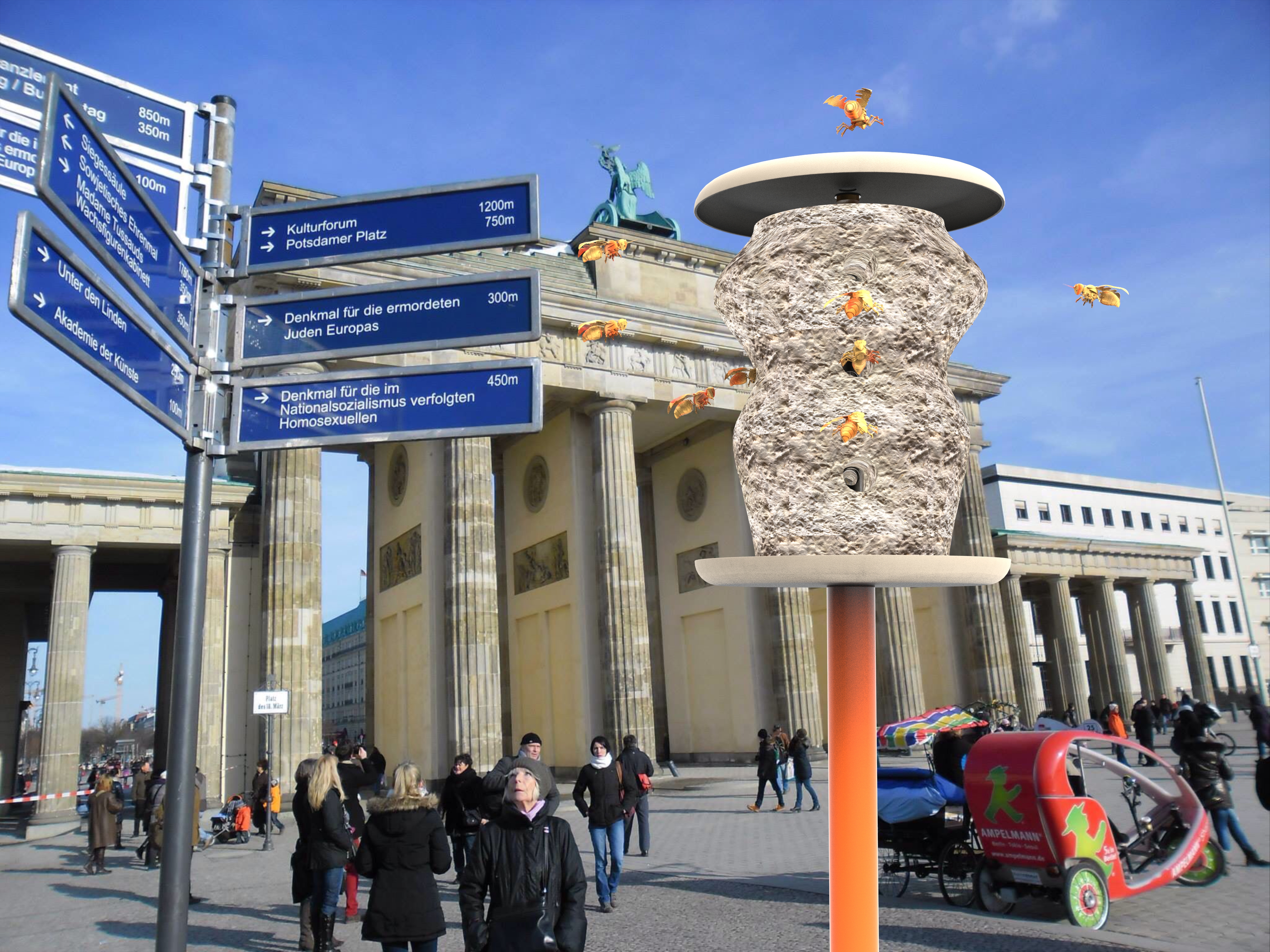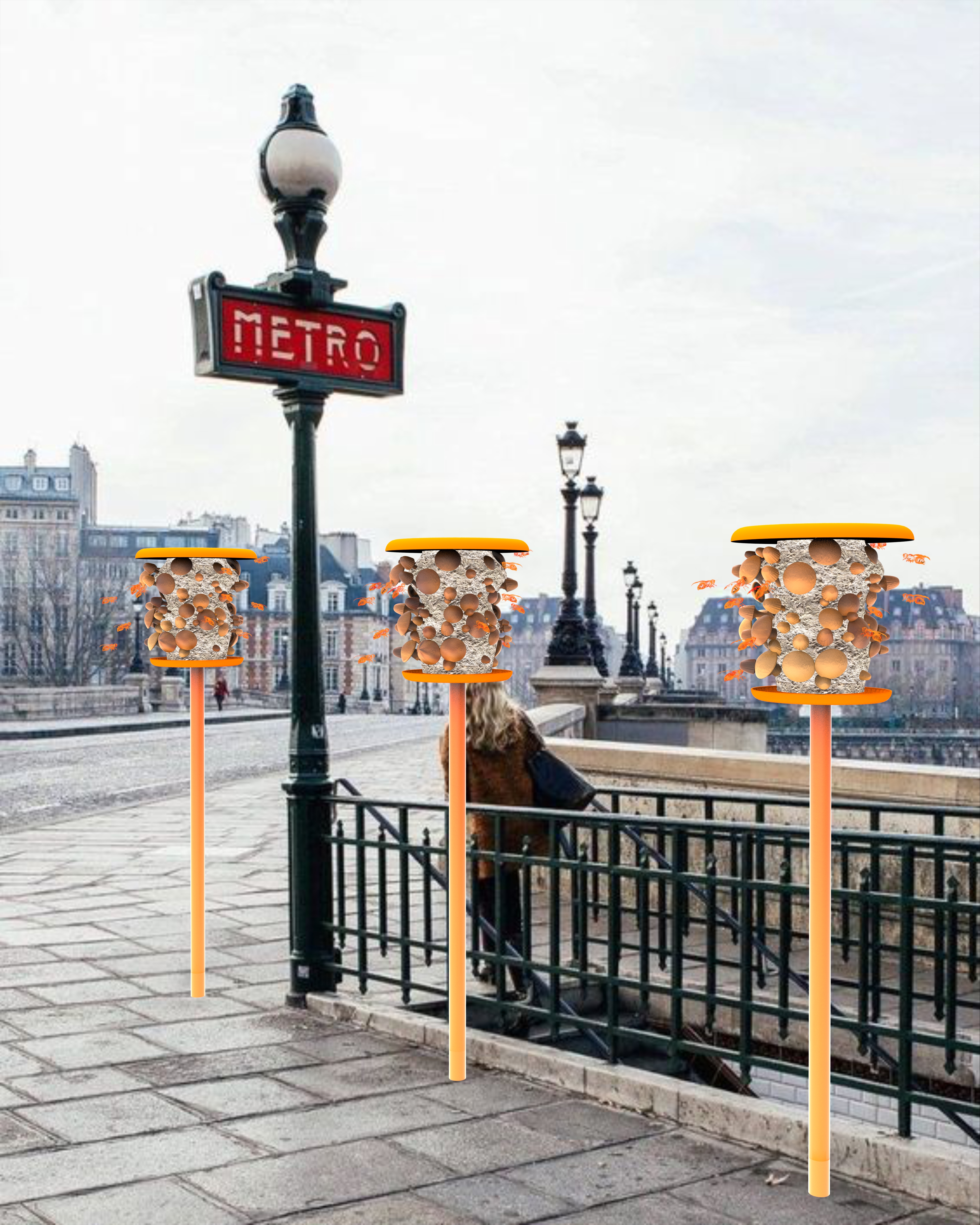Product design | Sustainable Design | Concept dev.
︎research
Bee booster is a product designed to improve bee health and longevity. Bees are essential pollinators for our planet and pollinate one-third of the food we eat. However, the varroa mite, a virus-carrying parasite, poses the greatest threat to bee populations.
A recent study found that bees who consumed extracts from reishi and amadou mushrooms showed significant improvements in health. In controlled, caged experiments, bees suffering from deformed wing virus and Lake Sinai virus were given small amounts of mushroom mycelium extract daily. The study's results suggest that the antiviral and immune-boosting properties in mushroom mycelia have the potential to support and strengthen the bee’s immune system.
Bees are the single most important pollinator for agriculture and responsible for every third bite of food we eat. However, their numbers are dwindling due to threats such as the varroa mite, a virus-carrying parasite that poses the greatest threat to bee populations worldwide. By boosting bee health and longevity, the Bee Booster installation could help counter this trend and support sustainable agriculture for generations to come.
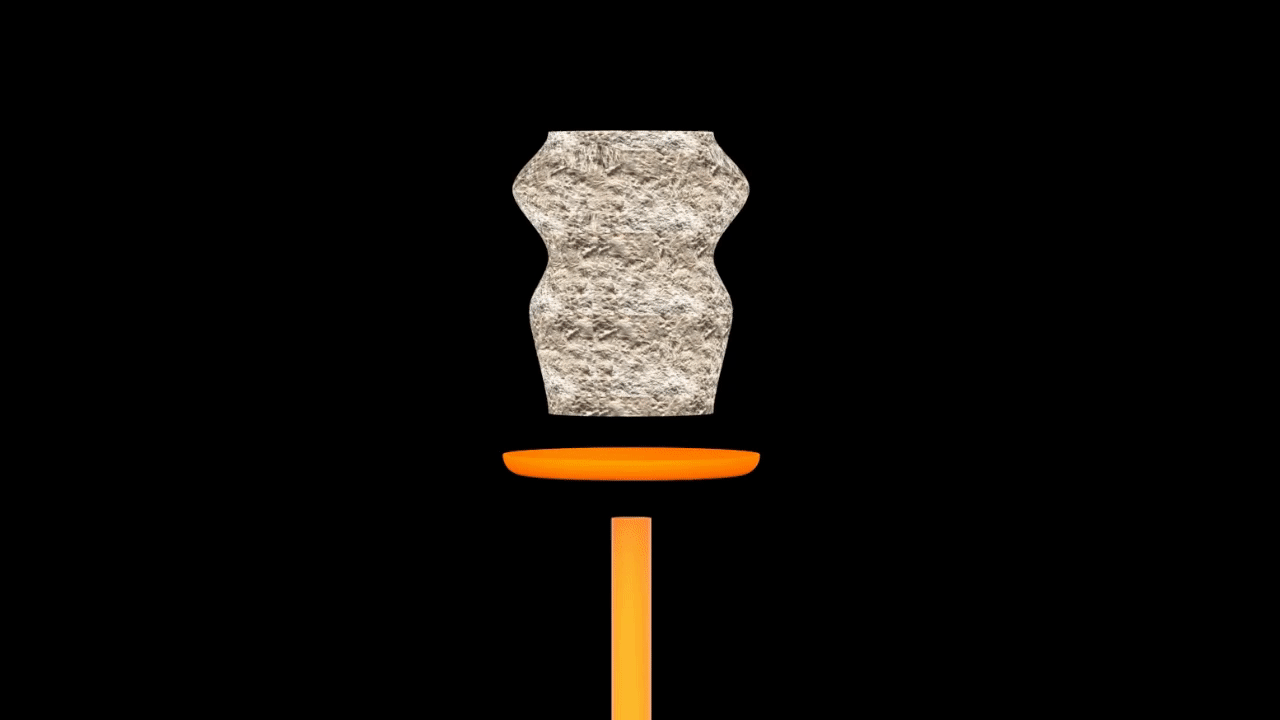



The Bee Booster installation is structured to both protect the mushroom mycelium from the elements and attract bees. It features a roof to shield the mycelium, which can need some rain but benefits from additional protection in extreme weather events. To lure bees, the installation offers an abundant nectar source, such as oranges or other bee-friendly plants. The mycelium is molded and then placed in the center of the product, where it continues to grow. After a few weeks the muschrooms will grow.
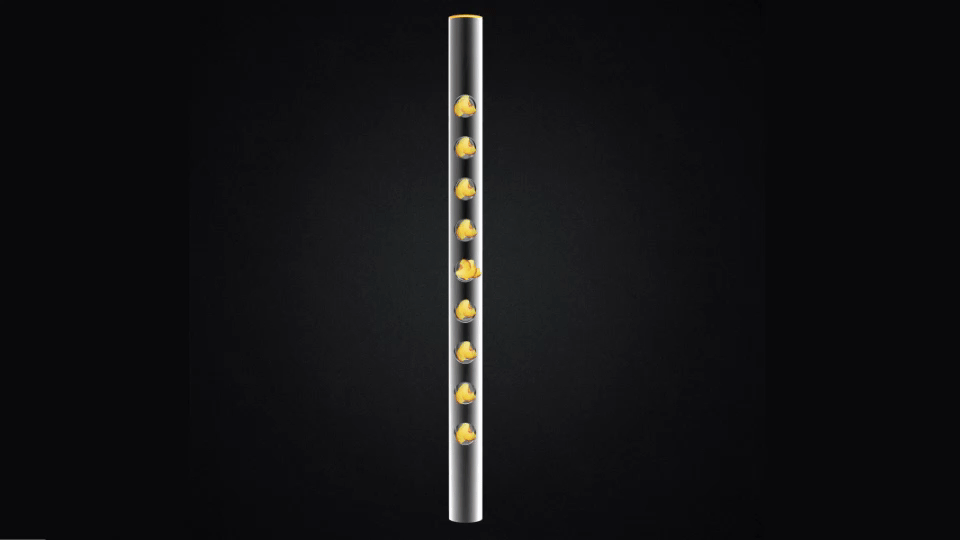
This multifunctional component connects the nectar sources in a straightforward manner by inserting them directly into the framework. In addition to connecting the nectar sources ( in this case a peach), it also connects the two roofs, thereby allowing for a free flow of materials between all areas of the structure.
Prototype



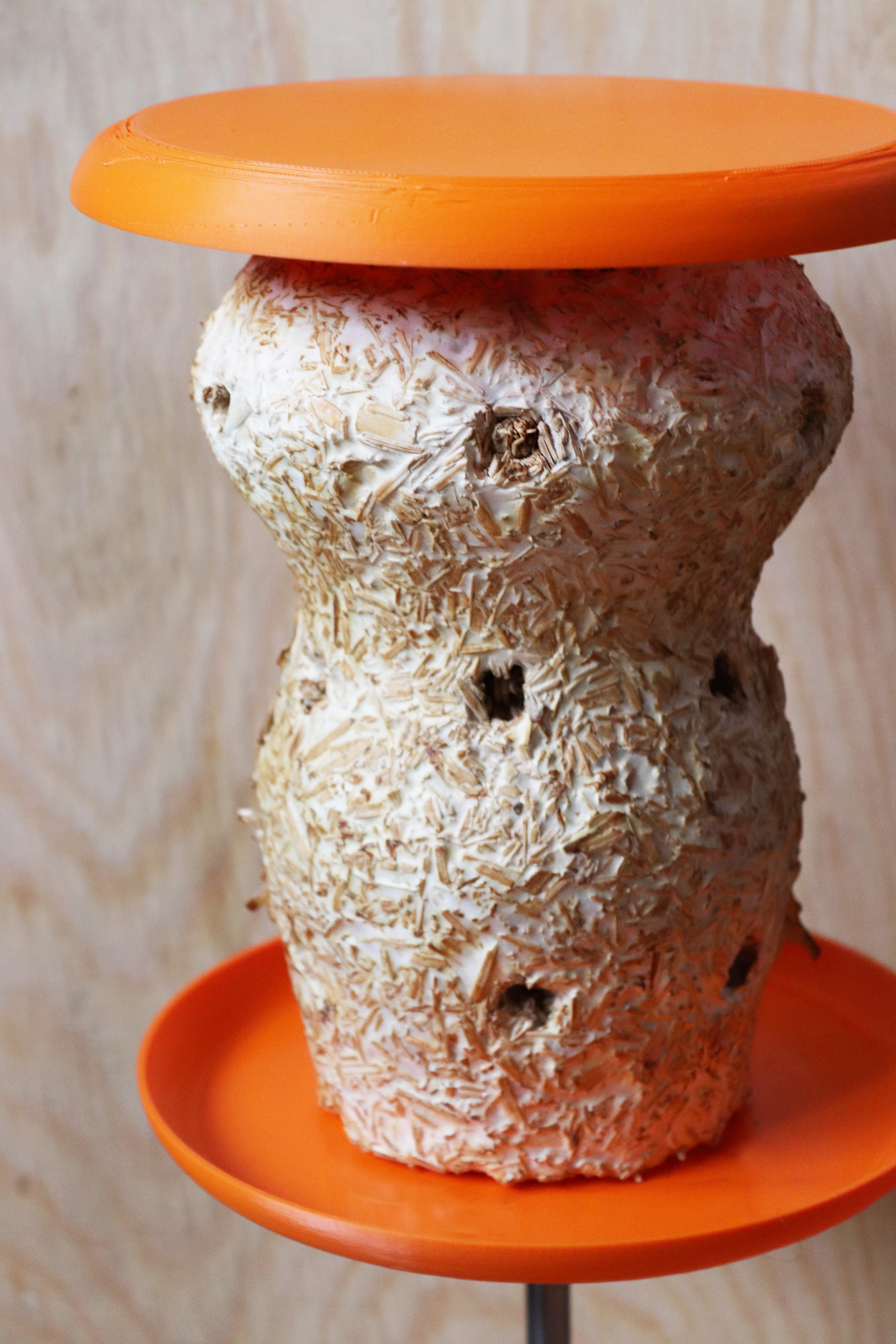


Molding the Mycelium
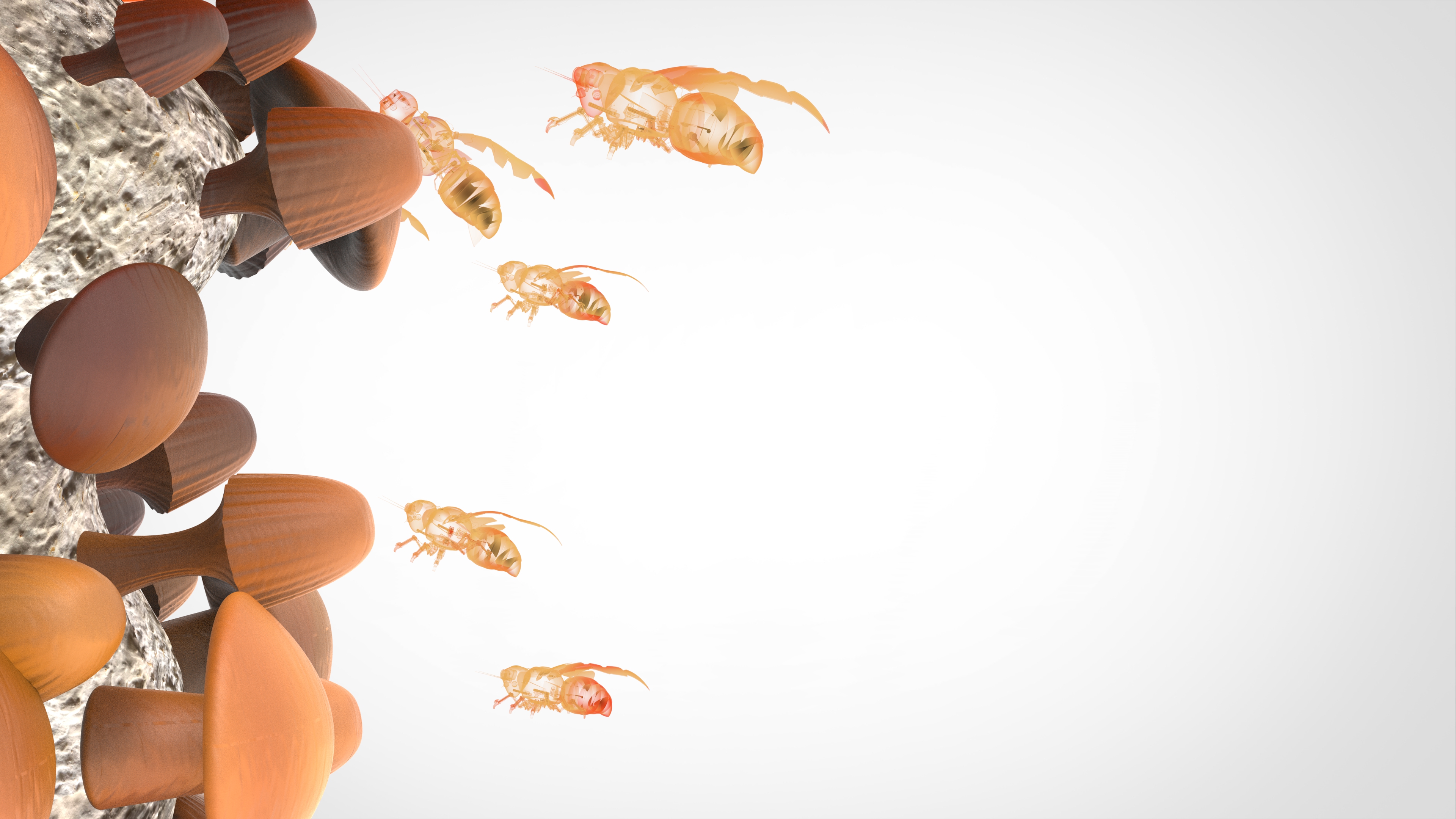
Holes in the mycelium allow bees to access nectar inside the mycelium.
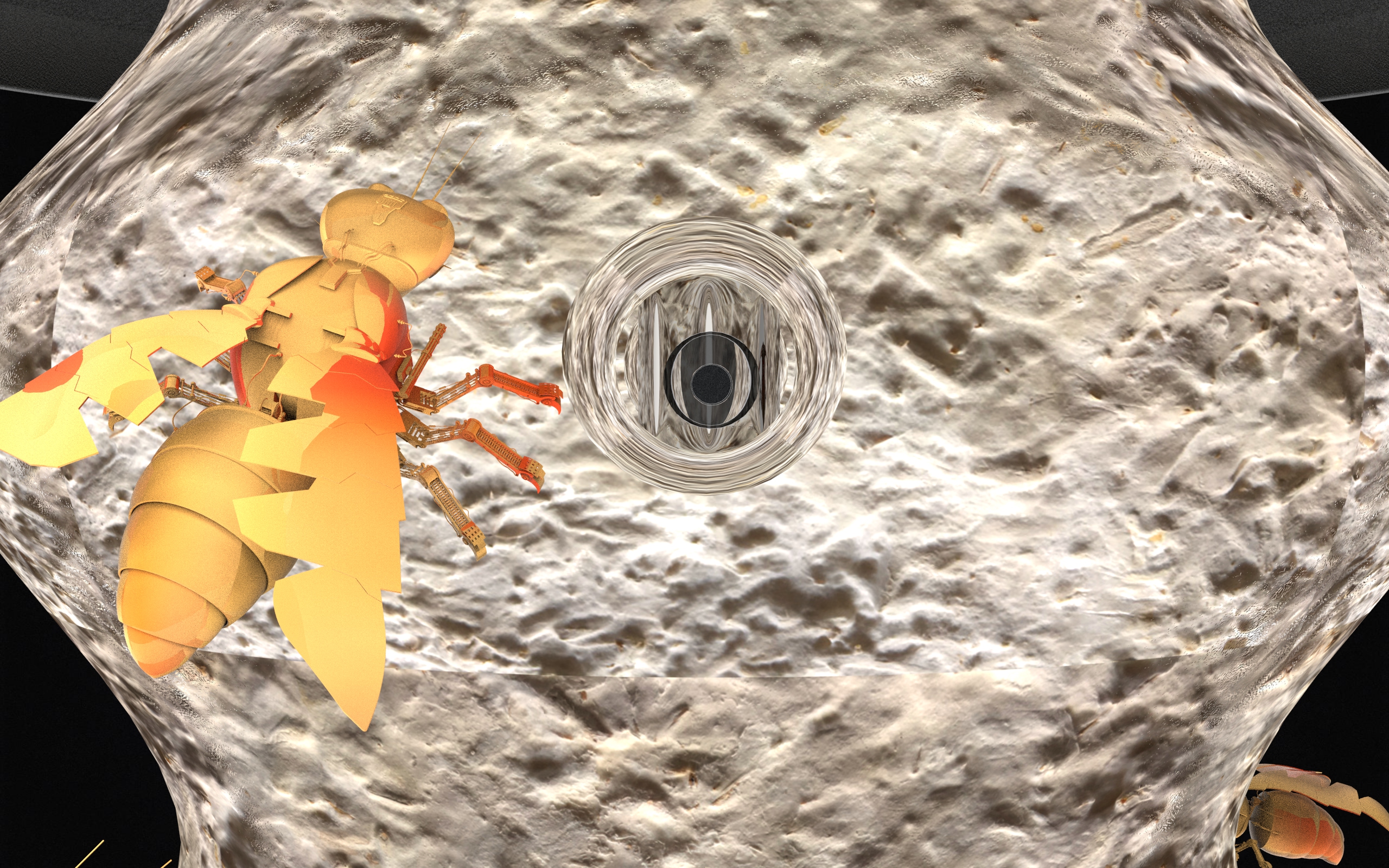


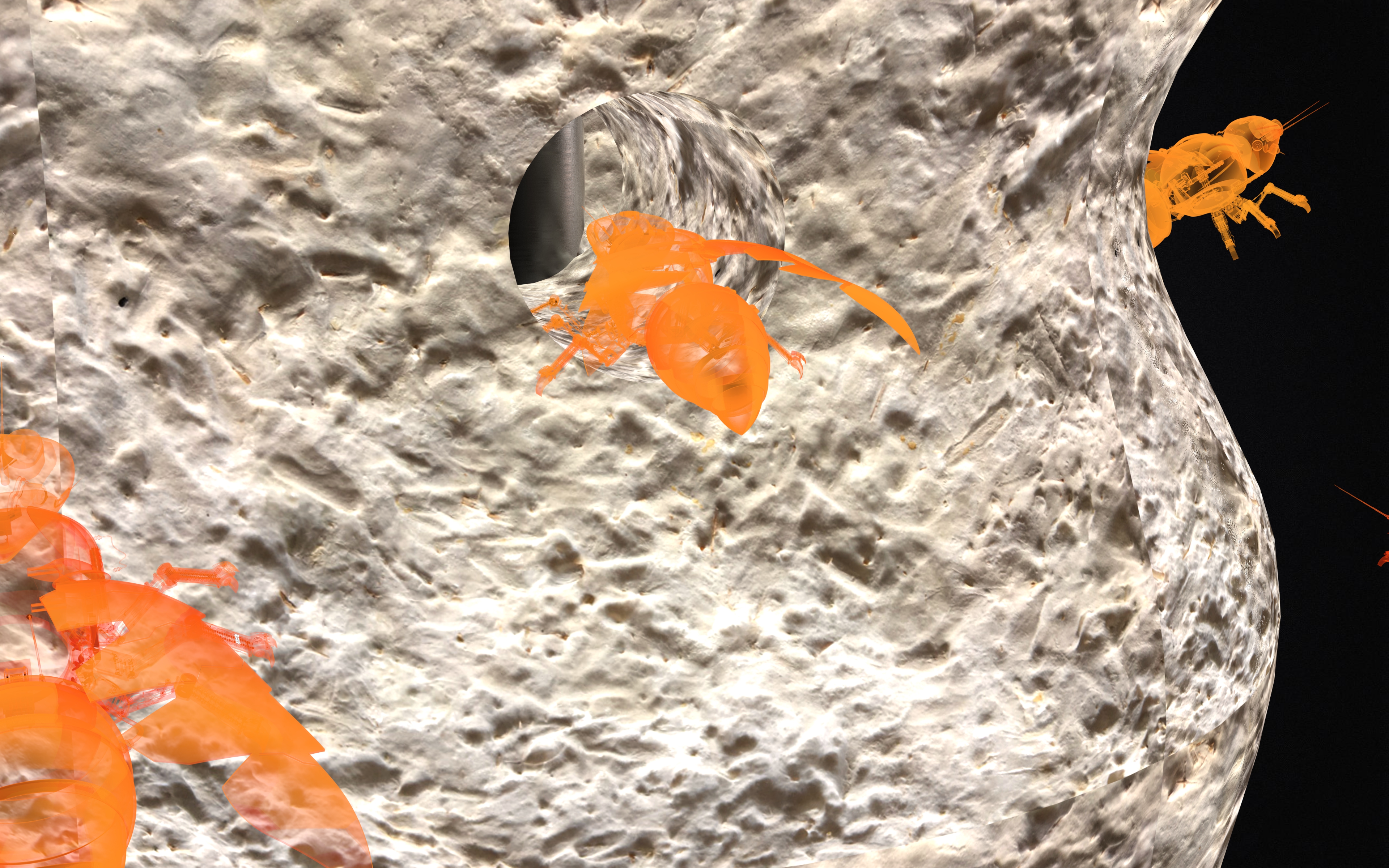

The objective is to prominently display the product in a popular urban area in order to create an inviting atmosphere for bees and increase their comfort level. Positioning the product in a busy, bee-friendly part of the city will help bees feel accepted and valued members of the community.
